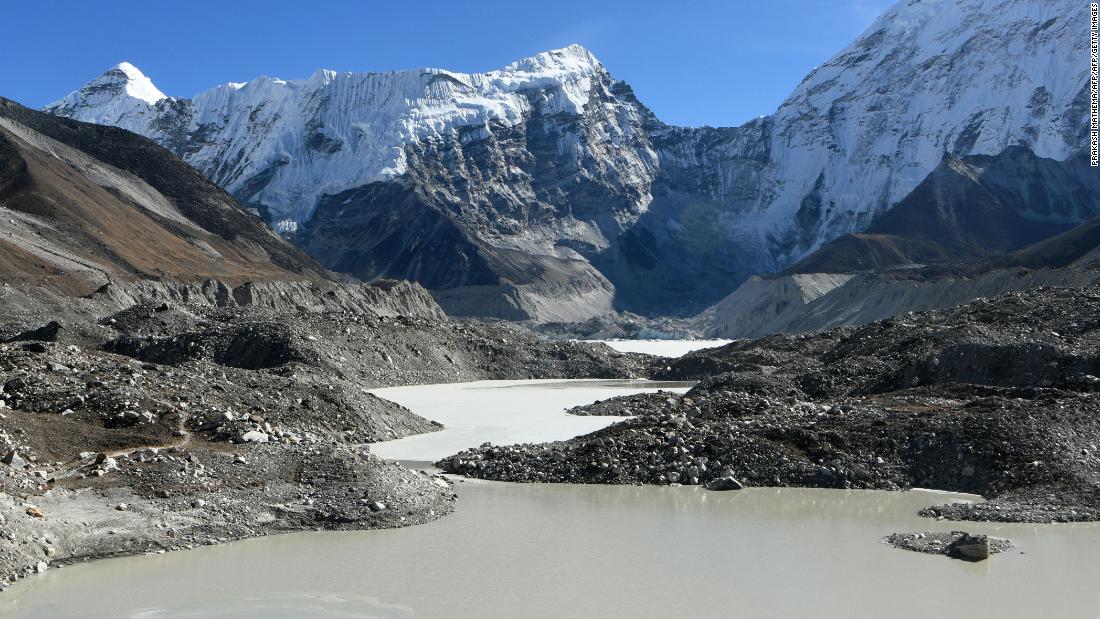[ad_1]
Spanning 2,000 kilometers and harboring some 600 billion tons of ice, Himalayan glaciers supply around 800 million people with water for irrigation, hydropower and drinking.
But they have been losing almost half a meter of ice each year since the start of this century — double the amount of melting that occurred between 1975 and 2000 — according to the Columbia University researchers behind the study.
Recently, the glaciers have lost around 8 billion tons of water a year — the equivalent of 3.2 million Olympic-size swimming pools, say the researchers. And that could potentially threaten water supplies for hundreds of millions of people across parts of Asia.
As the ice melts it forms large glacial lakes, which are already impacting local communities, according to lead author Joshua Maurer.
“[They] can collapse and result in these huge outburst floods. And these are devastating for downstream communities,” he said.
Short-term, experts predict more of this flooding, but less ice in the glaciers could ultimately lead to drought.
The researchers reviewed 40 years of satellite observations across India, China, Nepal and Bhutan and found that Himalayan glaciers have been retreating rapidly since 2000 due to an average 1 degree Celsius temperature rise in the region.
“[This is] one of the clearest pictures that we’ve seen yet of how fast [Himalayan] glaciers are losing ice over [this] interval,” Maurer told CNN.
“Atmospheric warming appears to really be the dominant driver of ice loss,” he said, adding that Himalayan glaciers may have lost as much as a quarter of their enormous mass over the past four decades.
Jeffrey Kargel, of The Planetary Science Institute, in Arizona, who didn’t work on the study, said the paper was “an excellent contribution to our rapidly and fabulously growing knowledge of Himalayan glaciation.”
“In the short-term, such rapid melt rates will mean summer floods become more frequent as river discharge is increased, but the long-term prospect is one of drought as the glacier reservoir becomes depleted,” Duncan Quincey, a professor at the University of Leeds who specializes in glaciology and did not carry out the research, told CNN.
Chris Rapley, professor of climate science at University College London, who is not connected to this study, told CNN that ice loss is “already undermining the viability of small communities in the Himalayas as they suffer ever more serious water shortages.”
According to Rapley, water shortages in the Himalayas could trigger mass migration — a “daunting” prospect.
“Better for all of us to accelerate to net zero as a matter of the highest priority,” he said.
Net zero means the amount of greenhouse gases emitted into the atmosphere is no more than the amount taken out.
Joerg Schaefer, co-author of the study and research professor at Columbia’s Earth Observatory, said the only way to slow down the melting was by “cooling the planet.”
“This study gives you a pretty clear picture of what will happen there in the next 50 years. If [melting] goes on like that, it will be devastating,” he said.
[ad_2]
Source link


